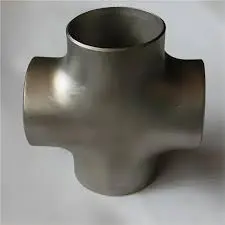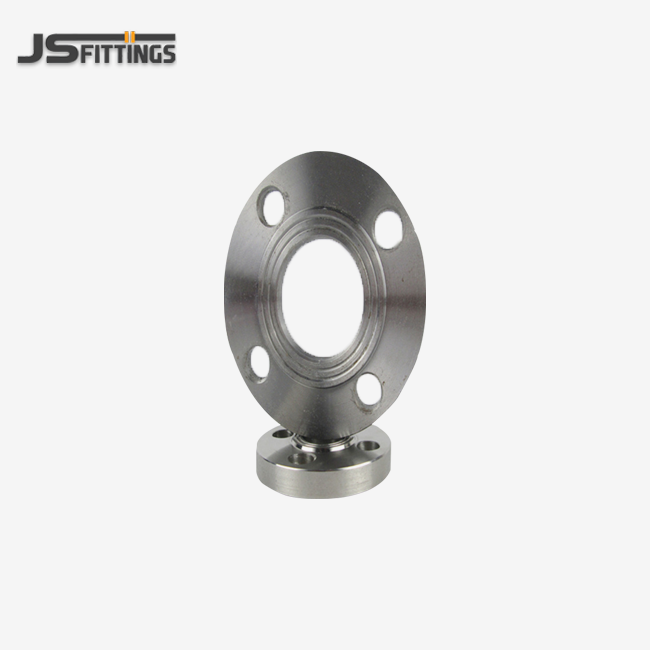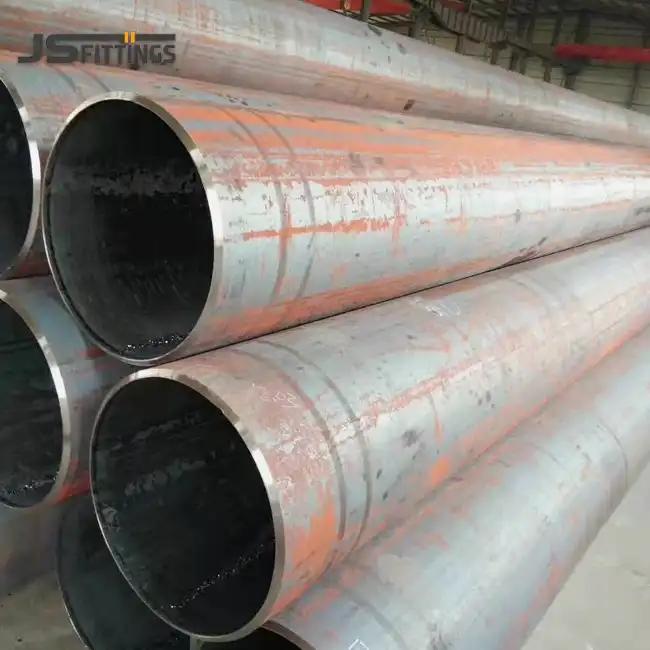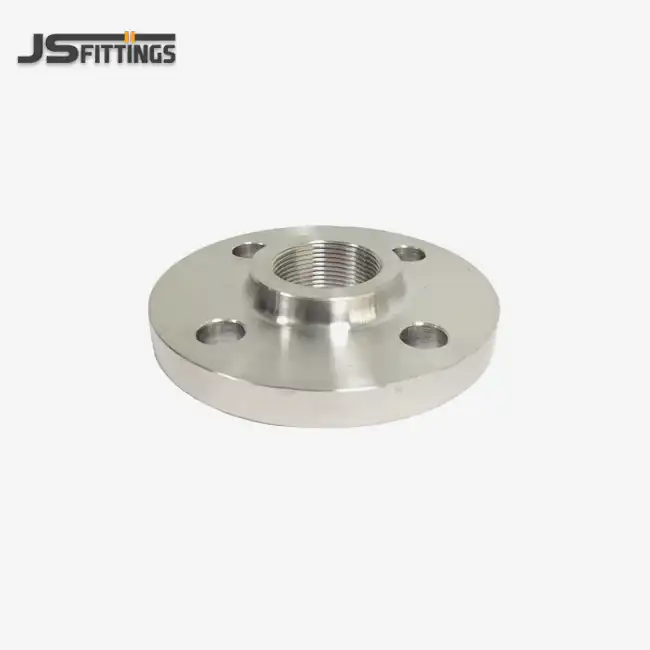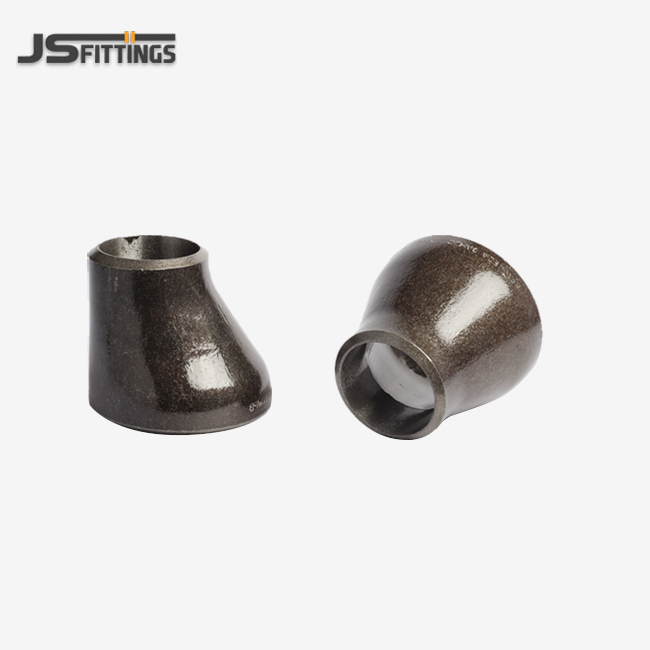How Butt Weld Cross Enhances System Integrity?
The butt weld cross plays a pivotal role in maintaining the integrity of high-pressure systems through its unique design and construction. Unlike threaded or mechanical joints, butt weld crosses create a seamless connection that significantly reduces the risk of leaks and structural weaknesses. This seamless integration is achieved through the process of butt welding, where the cross is fused directly to the pipe ends, creating a homogeneous joint that can withstand high pressures and temperatures.
Material Compatibility and Corrosion Resistance
One of the key advantages of butt weld crosses is their material compatibility with the piping system. Manufactured from high-quality materials such as carbon steel, alloy steel, and stainless steel, these fittings can be matched precisely to the pipe material, ensuring uniform strength and corrosion resistance throughout the system. This compatibility is crucial in environments where the piping system is exposed to corrosive media, as it prevents galvanic corrosion and extends the overall lifespan of the installation.
Stress Distribution and Load Bearing
The design of the butt weld cross allows for optimal stress distribution across the joint. By eliminating sharp edges and abrupt transitions, it minimizes stress concentration points that could lead to fatigue or failure under high-pressure conditions. This even distribution of forces enhances the load-bearing capacity of the entire piping system, making it more resilient to pressure fluctuations and thermal expansion.
Leak Prevention and Safety
The seamless nature of the butt weld joint created by the cross-fitting is instrumental in preventing leaks. In high-pressure systems, even minor leaks can lead to significant safety hazards and operational inefficiencies. The butt weld cross, when properly installed, forms a leak-tight seal that maintains system integrity even under extreme conditions. This leak prevention capability not only enhances safety but also contributes to the overall efficiency of the system by minimizing product loss and reducing maintenance requirements.
Pressure Ratings: Selecting the Right Cross
Choosing the appropriate butt weld cross for a high-pressure system requires careful consideration of pressure ratings. These ratings are critical in ensuring that the fitting can withstand the operational pressures of the system without compromising safety or performance. When selecting a butt weld cross, it's essential to understand the various factors that influence its pressure-bearing capacity and how to interpret the ratings provided by manufacturers.
Understanding Pressure Class and Schedule
Butt weld crosses are typically categorized by pressure class and schedule. The pressure class, often expressed in pounds (e.g., 150#, 300#, 600#), indicates the maximum allowable working pressure at a specific temperature. The schedule, on the other hand, refers to the wall thickness of the fitting, which directly affects its pressure-bearing capacity. It's crucial to select a cross with a pressure class and schedule that meets or exceeds the system's requirements to ensure safe and reliable operation.
Material Considerations for High-Pressure Applications
The material of the butt weld cross plays a significant role in its pressure rating. Different materials offer varying levels of strength and durability under high-pressure conditions. For instance, stainless steel crosses generally provide superior corrosion resistance and can maintain their integrity at higher temperatures compared to carbon steel variants. When selecting a cross for high-pressure systems, consider not only the immediate pressure requirements but also factors such as temperature fluctuations, chemical compatibility, and long-term stress exposure.
Certification and Testing
To ensure the reliability of pressure ratings, reputable manufacturers subject their butt weld crosses to rigorous testing and certification processes. Look for fittings that comply with industry standards such as ASME B16.9, EN 10253, or GOST. These certifications provide assurance that the cross has been manufactured and tested to meet specific pressure and performance criteria. Additionally, certifications like CE/PED 2014/68/EU offer further validation of the fitting's suitability for high-pressure applications in various industries.
Installation Best Practices for Optimal Performance
Proper installation of a butt weld cross is crucial for ensuring its optimal performance and longevity in high-pressure systems. Following best practices during the installation process not only enhances the integrity of the connection but also maximizes the efficiency and safety of the entire piping network. Here are key considerations and steps to achieve the best results when installing butt weld crosses.
Preparation and Alignment
Before welding, thorough preparation of the pipe ends and the butt weld cross is essential. This includes cleaning the surfaces to remove any contaminants, rust, or debris that could compromise the weld quality. Proper alignment of the cross with the connecting pipes is critical to ensure even stress distribution and prevent misalignment-induced stress. Utilizing alignment tools and jigs can help achieve precise positioning, which is particularly important in high-pressure systems where even minor misalignments can lead to significant issues over time.
Welding Techniques and Quality Control
The welding process itself requires skilled execution to create a strong, uniform joint. Techniques such as GTAW (Gas Tungsten Arc Welding) or SMAW (Shielded Metal Arc Welding) are commonly employed, depending on the material and specific requirements of the system. It's crucial to follow proper welding procedures, including preheating when necessary and maintaining the correct welding parameters throughout the process. Post-weld heat treatment may be required for certain materials to relieve internal stresses and enhance the joint's durability. Quality control measures, such as visual inspection, radiographic testing, or ultrasonic testing, should be implemented to verify the integrity of the weld and ensure it meets the required standards for high-pressure applications.
System Integration and Testing
Once the butt weld cross is installed, integrating it into the larger system requires careful consideration. This includes ensuring proper support for the piping around the cross to prevent undue stress on the welded joints. After installation, conducting pressure tests on the system is crucial to verify the integrity of all connections, including the newly installed cross. These tests should be performed at pressures exceeding the system's operational pressure to ensure a safety margin. Additionally, leak detection methods should be employed to identify any potential weaknesses in the installation before the system is put into service.
Maintenance and Inspection Protocols
Establishing regular maintenance and inspection protocols is essential for the long-term performance of butt weld crosses in high-pressure systems. Periodic visual inspections can help identify early signs of corrosion, stress cracking, or other forms of degradation. Non-destructive testing methods, such as ultrasonic thickness measurement, can be employed to monitor the wall thickness of the cross and connected pipes over time. By implementing a proactive maintenance strategy, potential issues can be identified and addressed before they lead to system failures or safety hazards.
In conclusion, the installation of butt weld crosses in high-pressure systems demands meticulous attention to detail and adherence to best practices. From initial preparation and alignment to welding, system integration, and ongoing maintenance, each step plays a crucial role in ensuring the cross performs optimally throughout its service life. By following these guidelines and leveraging the expertise of skilled professionals, industrial facilities can maximize the benefits of butt weld crosses in their high-pressure piping systems, ensuring safety, efficiency, and reliability in their operations.
Conclusion
The butt weld cross stands as a critical component in high-pressure piping systems, offering unparalleled strength, versatility, and reliability. Through its seamless design and precision engineering, it enhances system integrity, facilitates complex piping layouts, and ensures safe operation under demanding conditions. As we've explored, the selection of the right butt weld cross involves careful consideration of pressure ratings, material properties, and system requirements. Proper installation and maintenance are equally crucial in maximizing the performance and longevity of these fittings.
For EPC contractors, industrial project developers, and engineering firms seeking to optimize their high-pressure systems, choosing the right supplier for butt weld crosses is paramount. Hebei Jinsheng Pipe Fitting Manufacturing Co., Ltd (JS FITTINGS) stands out as a trusted manufacturer with over 40 years of experience in producing high-quality steel butt-weld pipe fittings. Our advanced production lines, coupled with certifications including ISO 9001, CE, and GOST-R, ensure that our products meet the most stringent industry standards. Whether you're working on projects in the Middle East, South America, Europe, or Asia, our competitively priced, high-performance fittings are designed to meet your most demanding industrial applications.
FAQ
1. What are the primary advantages of using butt weld crosses in high-pressure systems?
Butt weld crosses offer seamless integration, enhanced system integrity, and superior pressure resistance. They provide uniform strength, reduce leak risks, and allow for efficient multi-directional flow in complex piping layouts.
2. How do I select the correct pressure rating for a butt weld cross?
Choose a butt weld cross with a pressure class and schedule that meet or exceed your system's operational requirements. Consider factors such as maximum working pressure, temperature, and material compatibility to ensure safe and reliable performance.
3. What materials are commonly used for butt weld crosses in high-pressure applications?
Common materials include carbon steel, alloy steel, and stainless steel. The choice depends on the specific application, corrosion resistance requirements, and pressure-temperature conditions of the system.
4. How can I ensure proper installation of a butt weld cross?
Proper installation involves careful preparation, precise alignment, skilled welding techniques, and thorough quality control. Follow industry standards, use appropriate welding procedures, and conduct post-installation testing to verify the integrity of the connection.
High-Quality Butt Weld Cross for Industrial Applications | JS FITTINGS
Looking for reliable butt weld crosses for your high-pressure piping systems? JS FITTINGS offers a comprehensive range of high-quality butt weld crosses engineered to meet the most demanding industrial requirements. Our products are manufactured to strict quality standards and come with full certification, ensuring optimal performance and safety in your applications. Whether you need standard sizes or custom solutions, our team is ready to assist you. Contact us today at admin@chinajsgj.com to discuss your specific needs and how we can support your project with our expertise and superior products.
References
1. ASME B16.9-2018: Factory-Made Wrought Buttwelding Fittings. American Society of Mechanical Engineers.
2. Nayyar, M.L. (2000). Piping Handbook, 7th Edition. McGraw-Hill Education.
3. American Welding Society. (2015). AWS D1.1/D1.1M:2015 Structural Welding Code - Steel.
4. Antaki, G.A. (2003). Piping and Pipeline Engineering: Design, Construction, Maintenance, Integrity, and Repair. CRC Press.
5. Smith, P. (2005). Piping Materials Guide. Elsevier Science.
6. Kannappan, S. (1986). Introduction to Pipe Stress Analysis. John Wiley & Sons.
